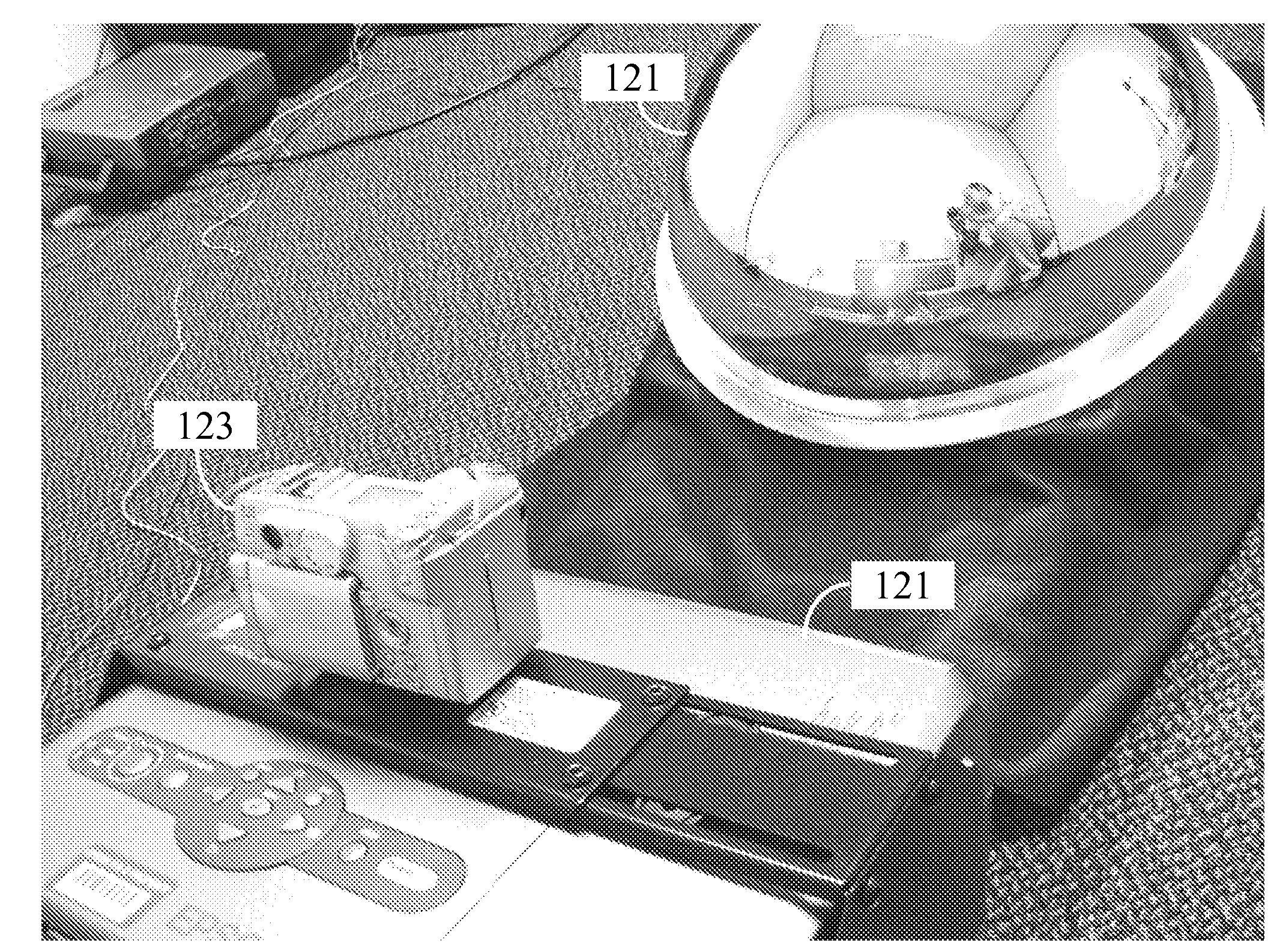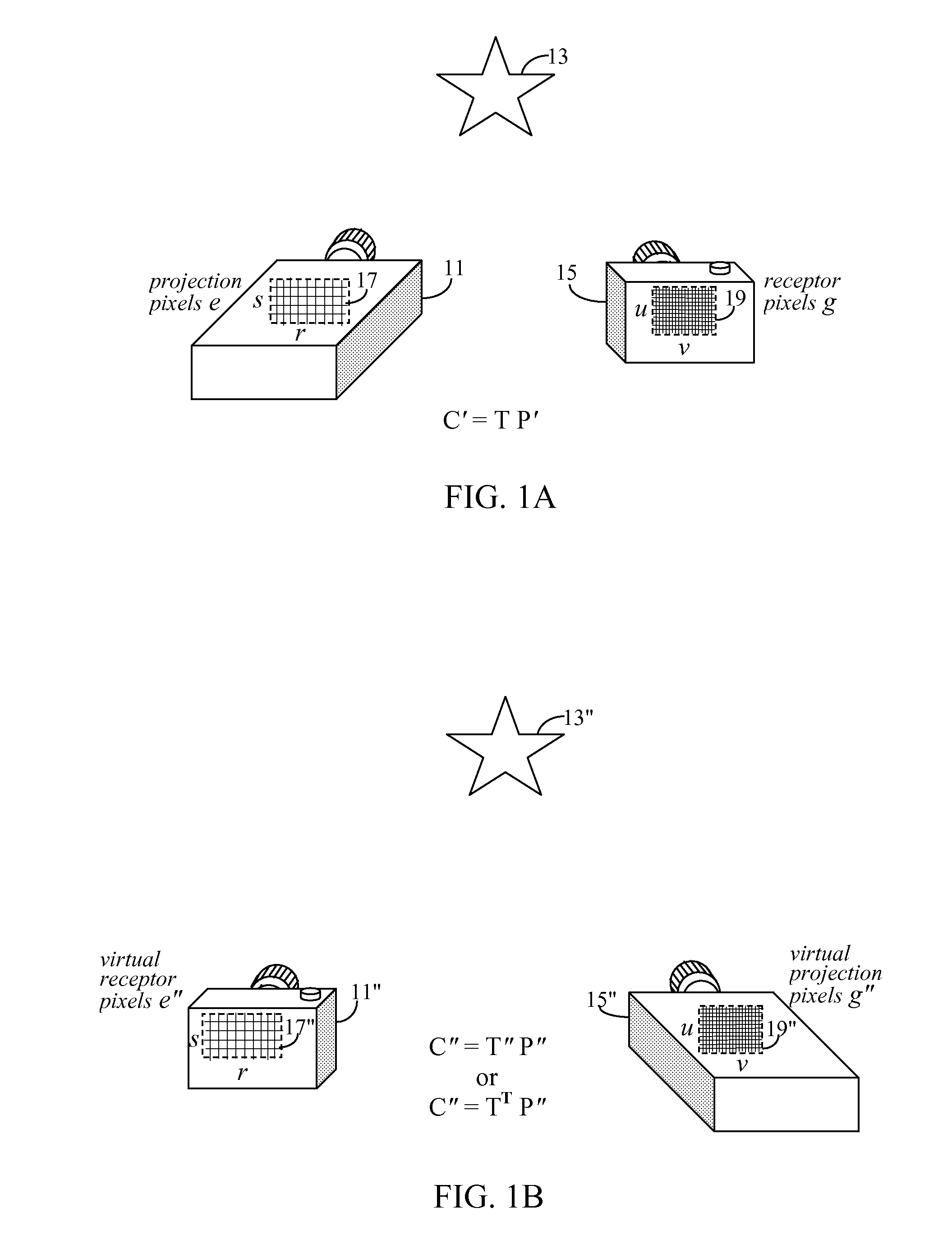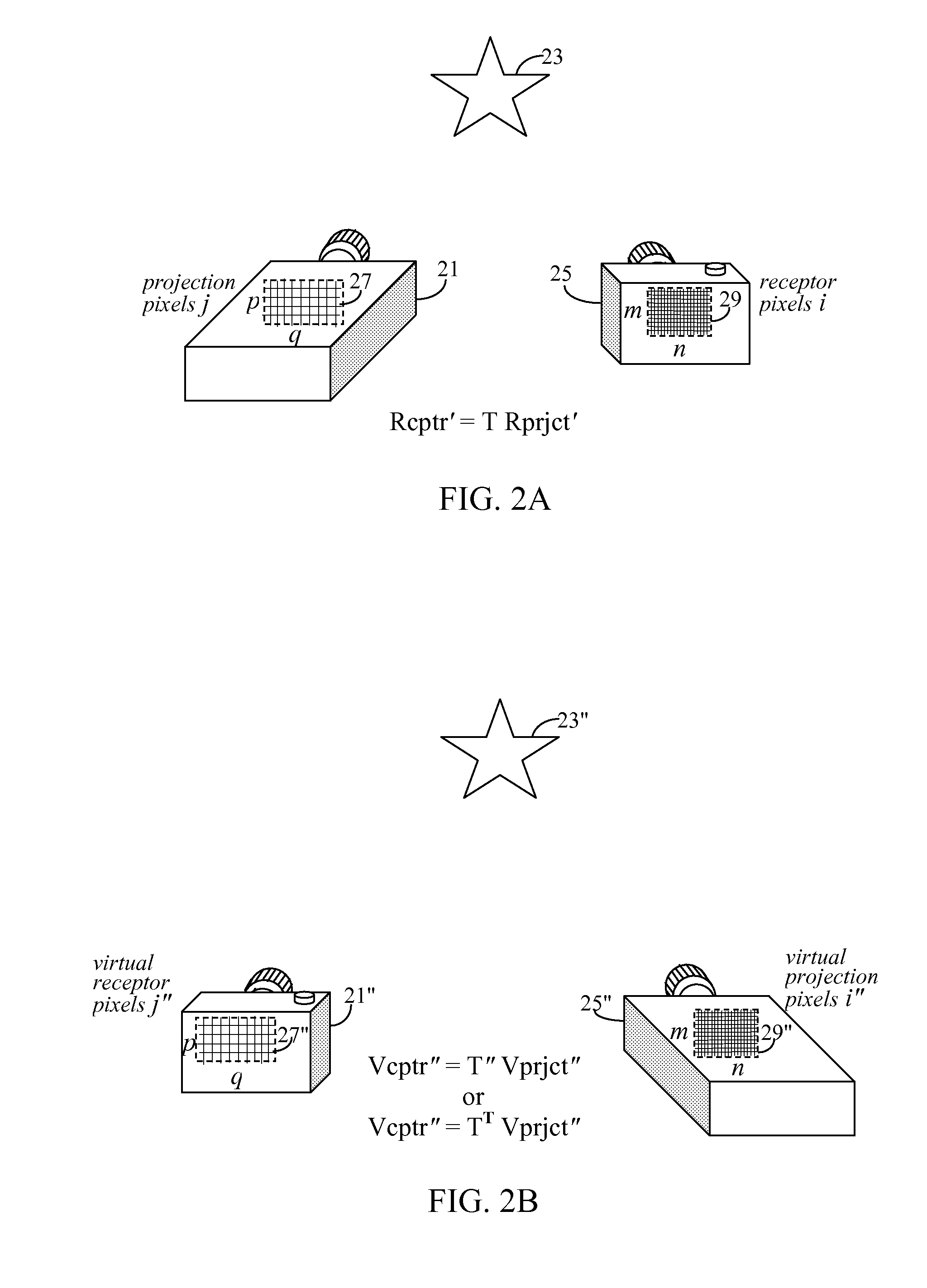Modeling Light Transport In Complex Display Systems
a display system and light transport technology, applied in the field of calibrating projectors, can solve the problems of inability to capture images, inapplicable calibration techniques of camera equipment, and real practical limitations of its use, and achieve the effect of simplifying the application of dual photography
- Summary
- Abstract
- Description
- Claims
- Application Information
AI Technical Summary
Benefits of technology
Problems solved by technology
Method used
Image
Examples
Embodiment Construction
[0077]If projectors could capture images, then there would be no need to differentiate between real projectors and real cameras, and projector-camera systems could be treated like multi-camera systems. Subsequently, the standard camera calibration techniques described above could be used to calibrate projector-camera systems. In other words, if the projector could be treated as a pseudo-camera, then it could be calibrated along with a real camera in a manner similar to the camera calibration stage of the multi-camera system described above, and the “bootstrapping” projector calibration stage might be eliminated.
[0078]Consequently, whereas in the “bootstrapping” projection calibration technique, a projector would project known feature points to be captured by a stereo pair of pre-calibrated cameras onto a known projection surface to determine the contours of the projection surface, a dual photography technique could eliminates the need for the stereo pair pre-calibrated cameras.
[0079...
PUM
 Login to View More
Login to View More Abstract
Description
Claims
Application Information
 Login to View More
Login to View More - R&D
- Intellectual Property
- Life Sciences
- Materials
- Tech Scout
- Unparalleled Data Quality
- Higher Quality Content
- 60% Fewer Hallucinations
Browse by: Latest US Patents, China's latest patents, Technical Efficacy Thesaurus, Application Domain, Technology Topic, Popular Technical Reports.
© 2025 PatSnap. All rights reserved.Legal|Privacy policy|Modern Slavery Act Transparency Statement|Sitemap|About US| Contact US: help@patsnap.com



